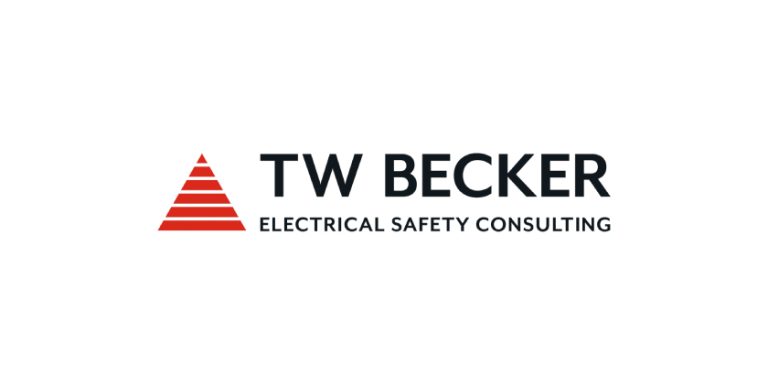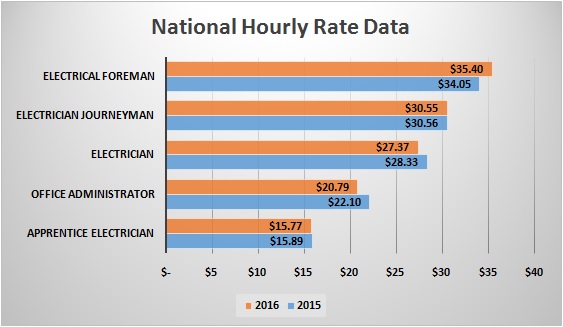IECC 2021 Decoded

June 7
By Craig DiLouie
In January 2021, the International Code Council published the 2021 version of the International Energy Conservation Code (IECC), which has been updated every three years since 2000. This new version reduces lighting power allowances, expands mandatory controls requirements, and issues clarifications.
This article starts with some background about commercial building energy codes and then describes the major lighting control requirements in 2021 IECC, highlighting significant changes from the 2018 version. The most significant changes in the control requirements include the addition of daylight-responsive control for secondary daylight zones, plug load control, parking garage lighting control, and corridor lighting control.
A line-by-line comparison of the 2021 and 2018 versions was conducted to produce this article; if you see anything significant that we missed or any other errors (as this document may include errors and involves some interpretation, it obviously should not be used as a substitute for the code), please let us know. For greater specificity, consult the actual language in the IECC. For ultimate interpretation, consult the authority having jurisdiction.
Purpose of energy codes
Commercial building energy codes regulate the energy-efficient design of buildings. States and other jurisdictions adopt them and require compliance.
Scope of IECC 2021
IECC 2021 applies to various energy-using systems installed in building new construction, additions, and alterations, including electric lighting. For alterations, all of the lighting provisions must be followed for the newly installed lighting system except if less than 10% of the luminaires are replaced and these new luminaires do not increase the installed lighting power.
The lighting section (C405) contains prescriptive and mandatory provisions focused on lighting power allowances, lighting controls, and commissioning. The lighting control requirements apply to all lighting except 24-hour emergency or security lighting, emergency egress lighting that is off during normal building operation, and lighting for interior egress stairways, ramps, and passageways. Otherwise, each requirement may include its own particular exemptions.
Lighting control
Conceptually, IECC 2021 aims to minimize energy consumption by automatically reducing or turning off lighting when it is not being used based on three inputs: occupancy, a time event, or ambient light level. Additionally, various manual controls are required for occupant convenience and additional energy savings with light reduction, and zoning restrictions ensure independent control of lighting where needed. Commissioning requirements ensure the lighting control system is functionally tested and supported by construction documents.
Compliance paths
With the 2018 version, the IECC began offering two paths for interior lighting controls compliance. The first is a discrete approach that satisfies all the applicable requirements. The other is simpler, being based on use of luminaire-level lighting controls (LLLC) along with occupancy sensors, specific application controls, and manual controls. These luminaires feature independently operating and configurable onboard controls that automatically raise or lower light output based on occupancy or ambient light level.
Occupancy sensing (C405.2.1)
Occupancy sensors can be used where appropriate to satisfy requirements for interior automatic shutoff, but they are specifically required in a range of spaces. These are usually smaller, enclosed spaces such as classrooms and private offices but also include larger spaces such as warehouses and open offices, which can be divided into smaller zones with dedicated occupancy sensor control.
What’s new in IECC 2021: Corridors are now specifically listed as one of the applications requiring occupancy sensors and have their own section with specific requirements.
Where occupancy sensors are installed, a separate manual space control is not needed. However, the sensor must incorporate a manual OFF switch. Otherwise, the sensor must turn the lights OFF within 20 minutes of the space being vacated and feature manual-ON or auto-ON-to-maximum-50-percent-power operation.
Occupancy sensors are required in warehouse aisles. Here, the sensor must reduce lighting power by no more than 50% after the aisle becomes vacant. The sensor must be zoned to a single aisle and not control any lighting outside the aisle.
What’s new in IECC 2021: The previous version of IECC required sensors to reduce lighting power by at least 50%. This was changed to “no more than 50%,” a minor but significant change. Additionally, occupancy sensors appear to no longer be specifically required in open areas in warehouses, where time-switch control now appears to be required. Finally, a manual control is now required to turn OFF lighting in the space.
Occupancy sensors are also required in open offices. if the open office is smaller than 300 sq.ft., the usual occupancy sensor provisions apply. If 300 sq.ft. or larger, the sensors must control general lighting up to a 600-sq.ft. control zone and either turn off or reduce lighting power by at least 80% (with a reasonably uniform illumination pattern) within 20 minutes when the zone is vacant. If all occupants leave the entire open office space, the sensors must turn off all general lighting within 20 minutes, or a time-switch control must provide this on a scheduled basis.
What’s new in IECC 2021: A provision that daylight-responsive controls sharing the space will only activate general lighting if occupancy is also detected has been removed. A provision was added that the sensor in a zone may automatically turn the lighting on upon occupancy; lighting in other zones still unoccupied may activate as well if this is desired, but at no more than 20% of full power.
Also new to IECC 2021 is a section covering occupancy control function in corridors. Unless the corridor is lighted with a bare amount of illumination required for safety, lighting power must be uniformly reduced by no more than 50% within 20 minutes of the space becoming unoccupied.
Time-switch controls (C405.2.2)
Where occupancy sensors are not installed, time-switch controls must be installed, with notable exceptions. The control must feature a minimum seven-day clock, backup capability in the event of power interruption, and “holiday” programming.
Users must be given override capability via a manual switch that is limited in zoning to 5,000 sq.ft. and keeps the lights on for no longer than two hours. In certain large facilities such as mall concourses and sports arenas, the override time may be longer (if switch is a captive key device) and the control area may be up to 20,000 sq.ft.
What’s new in IECC 2021: Perhaps to address any confusion, the code now specifically points out that the time-switch control is to be used to automatically turn lighting off when a space is scheduled as being unoccupied. Additionally, a light reduction exemption was moved from this section to where it belongs, under light-reduction controls.
Light-reduction controls (C405.2.3)
Where occupancy sensors (featuring an on/off switch) and daylight-responsive controls are not required, a manual control capable of light reduction must be installed. Some spaces require a manual control but not light reduction, including spaces with only one low-wattage luminaire, spaces with very low lighting power density (<0.6W/sq.ft.), and corridors, lobbies, and electrical/mechanical rooms. Occupants must be able to use the manual control to reduce lighting by at least 50% with a reasonably uniform illumination pattern.
What’s new in IECC 2021: Compliant light-reduction options are now clearer and more in line with the LED era. These options include continuous dimming of all luminaires from full to less than 20% of power, switching all luminaires to 30-70% of full power, and alternate switching of luminaires or luminaire rows to 30-70%.
Daylight-responsive controls (C405.2.3)
IECC 2021 requires that general lighting in daylight zones feature daylight-responsive controls that independently control the lighting, with exceptions. IECC defines the dimensions of these daylight zones based on whether they are sidelit (adjacent to vertical fenestration such as windows) or toplit (under fenestration such as skylights).
What’s new in IECC 2021: IECC 2021 now identifies secondary daylit zones, which potentially doubles the reach of daylight-responsive control. IECC 2021 also recognizes a rooftop monitor as producing sidelit illumination. The code recognizes projection factor (shading by overhanging projections) as potentially limiting the utility of implementing daylight-responsive control. Finally, daylight zones in atrium spaces must be established at the top floor surrounding the atrium and not any intermediate floors.
The control must be automatic and provide continuous dimming down to 15% of full light output or lower and capable of turning the lights off. They must be configured so they can be calibrated within the space, with the calibration means readily accessible.
What’s new in IECC 2021: The continuous dimming to at least 15% of full output or lower is now required in all zones with daylight-responsive control, not just a few applications. In warehouses, open offices, and corridors where occupancy sensing produces a light-reduction effect, daylight-responsive controls may reduce power further but not raise it above the level set by the occupancy sensor.
Special applications (C405.2.4)
IECC 2021 designates control requirements for special applications such as display lighting and supplemental task lighting. These luminaires must be controlled by either an occupancy sensor or time-switch control for automatic shutoff, plus a manual control enabling them to be controlled separately from the general lighting.
Meanwhile, lighting for nonvisual applications such as plant growth must be served by an independent time-switch control. Lighting within sleeping units in buildings such as hotels must be turned off within 20 minutes of the room being unoccupied, along with all switched receptacles.
What’s new in IECC 2021: This section now includes in its covered list luminaires for which additional lighting power is claimed when using the space-by-space method. It also includes display lighting for gallery, museum, and monument exhibit lighting that is in addition to the general lighting. Healthcare task lighting must be provided with a manual control.
Parking garage lighting controls (C405.2.8)
IECC 2021 requires lighting controls in parking garages.
What’s new in IECC 2021: The latest version of the model code contains an entirely new section dedicated to parking garage control. Parking garage lighting must be controlled by either an occupancy sensor or a time-switch control. Additionally, lighting power must be automatically reduced based on occupancy with a time delay of 20 minutes and a control zone limited to a maximum of 3,600 sq.ft. At entrances and exits where light affects eye adaptation between indoor and outdoor brightness levels, lighting must be reduced by at least 50% between sunset to sunrise.
Plug load controls (C405.11)
Both previous versions of IECC and the 2021 version require power receptacle control in sleeping units, where they may be swept OFF using an occupancy sensor or card key control.
What’s new in IECC 2021: IECC 2021 now contains new general receptacle control requirements.
Specifically, at least 50% of all permanently installed 125V, 15A and 20A receptacles installed in certain applications such as enclosed offices, workstations, and classrooms must be controlled. At least 25% of branch circuit feeders installed for modular furniture not shown on the plans must be controlled.
The control function may be based on split-controlled receptacles (top controlled) or separate controlled receptacles must be installed within a foot of each uncontrolled receptacle. All controlled receptacles must be marked per NFPA 70 and uniformly distributed.
The receptacles may be controlled either on a scheduled basis using a time-switch control, via an occupancy sensor with a 20-minute time delay, or via a signal from another control or alarm system.
Exterior lighting controls (C405.2.7)
Exterior lighting must be turned off when sufficient daylight is present. Building façade and landscape lighting must be automatically turned off during the night when it is no longer needed. All other exterior lighting — typically operating dusk to dawn — must be reduced during the night based on time or occupancy.
[BF/IT]What’s new in IECC 2021[BF/IT]: Dusk-to-dawn lighting power must be reduced by at least 50%, not 30%, after hours. Outdoor parking lot luminaires greater than 78W and with a mounting height of 42 feet or less must be controlled with an occupancy sensor that reduces power by at least 50% with a 15-minute time delay. For control of such luminaires, control zoning is limited to 1500W of lighting power.
Additional energy efficiency requirements (C406)
Buildings complying with the 2021 IECC must enhance energy efficiency by choosing various options such as renewable energy and recovered or renewable water heating. Two of the options cover lighting and controls.
What’s new in IECC 2021: The table has been expanded into a credit system. New buildings are required to gain 10 credits from among 15 options. Between lighting and controls, 10 points can be gained.
For lighting, lighting power density (LPD) must be achieved that is at least 10 or 15% below the model code’s maximum LPD values. This option is valued at 8+ credits.
For lighting controls, digital controls must be implemented with compact control zoning of luminaires for maximum granularity of response. The digital lighting control system must be capable of continuous dimming, individual luminaire addressability, load shedding, and reconfiguration, same as in IECC 2018. What’s new in 2021 is giving occupants individual control of overhead general lighting is no longer required. This option is valued at 2 credits.
Testing and documentation (C408.3)
All lighting controls must be set up in accordance with approved documents and manufacturer instructions, and performance verified through testing. This ensures that the project team delivers a lighting and control system that operates as specified. Specific functional testing is indicated for different control types.
At the conclusion of the project, the owner must be given certain documentation about the lighting and control system so that they can maintain it. This is in addition to documentation provided by the functional testing party that the installed controls meet or exceed specified performance criteria.
Documentation requirements include a lighting and control narrative, operating and maintenance manuals, submittal data indicating all selected options for lighting and controls, a schedule for inspecting and recalibrating lighting controls, and more.
2021 IECC decoded
Commercial building energy codes continue to become increasingly restrictive in regard to lighting and controls, and the 2021 version of the IECC is no exception.
In the future, commercial building energy codes may evolve toward becoming focused on energy consumption rather than initial design power and control capability. In the meantime, IECC 2021 is likely to be adopted and used.
Designers in jurisdictions likely to implement the 2021 version of the IECC should start to become familiar with its requirements, as there are some significant changes, particularly in regard to controls.
For more information, consult the 2021 IECC: https://shop.iccsafe.org/2021-international-energy-conservation-coder.html
Craig DiLouie, LC, is Education Director for the Lighting Controls Association. Reprinted with permission of the Lighting Controls Association, www.lightingcontrolsassociation.org. The article has been lightly edited.
















